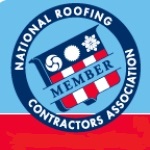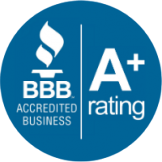Hicksville Roofing: Article About How Ponding Water Ruins Your Roof
A roof deck is the part of your roof that holds up the membrane and the shingles. It rests on top of the structural, load-bearing components of your roof, such as the joints or trusses. A specialized deck provides additional strength to your roof. It is typically made from plywood, but synthetic materials are becoming increasingly popular.
Question answered for our Hicksville roofing customers: How long can water safely stay on my roof?The term "ponding" is only ascribed to water accumulation that has remained on a rooftop for at least 48 hours. At this point, long-term damage is highly likely. However, you should not let water sit on your roof for any extended period of time. Ideally, you should start removing the water within a few hours of you noticing it. The sooner you can drain it off of your roof, the better your chances are for avoiding the problems listed above.

Severe weather, including significant rainfall, can really damage your rooftop. If there are sagging parts or crevices in your roof due to either age or design, water can start pooling in these areas and putting pressure on the supports of your roof. This phenomenon is known as ponding. When this issue is not addressed quickly, your Hicksville roofing could be compromised. If you were wondering about what exactly can happen when you have ponding on your roof, then you should look at the effects listed below.
Ponding can also occur after large amounts of snow have fallen. If there is a sudden thaw before most of the snow and ice have been cleared away, then the melted water may begin to pool in parts of your roof. As it cycles through freezing, thawing and re-freezing, the water will scrape along your shingles and significantly weaken them. Over time, this could lead to a roof collapse.
The water that accumulates on your roof is rarely clean. It can contain debris, micro-organisms, dirt, leaves and various pathogens. Given enough time, this water can cause mold and mildew to grow on your rooftop. Once it has taken hold, the mold can start to eat away at the roof supports in your ceilings. This can pose a health hazard to you and your family. You could also start experiencing problems with algae growth.
Have a question regarding roof inspections or TPO roofing? Ask Long Island Roofing of Hicksville NY.
Vegetation could also start to grow in such a moist environment, which means that your plumbing and internal walls could be broken or compromised by roots, debris and shrubbery.
Even just the water left by ponding can destroy your roof simply because it places a significant amount of pressure. This could cause your roof deck to warp and change shape under the stress, leading to more places for water to pond over time. Eventually, your roof deck and other structures could be under enough strain to trigger a collapse if there is enough ponding going on in several different parts of your rooftop.
Ponding can also cause significant leaks in your home due to the problems with water pressure on your roof. You might begin to notice heavy leaking where the water is concentrated, which can damage your home, destroy its property value and lead to expensive renovations and repairs.
Fortunately, you can prevent ponding from occurring by being vigilant about taking care of your roof. Check it frequently for sagging areas, missing shingles, and water damage or rot. Make routine repairs a part of your household maintenance. You would do everything in your power to keep standing water out of your house or lawn, so why shouldn't you do the same for your roof?.









